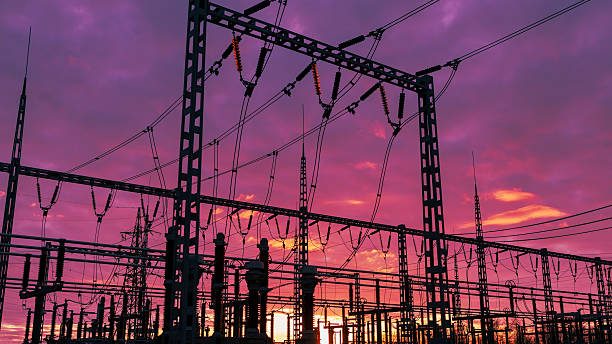🔧 What Is SVG?
A Static Var Generator (SVG) is a power electronic device designed to provide dynamic reactive power compensation. It operates using high-speed IGBT (Insulated Gate Bipolar Transistor) technology to inject or absorb reactive power in real time, thereby maintaining a stable power factor and improving overall power quality.
Unlike traditional capacitor banks or thyristor-controlled systems, SVGs offer precise, fast, and bidirectional control of reactive power, making them highly effective in environments with fluctuating or non-linear loads.
⚙️ How SVG Works
- Real-Time Sensing: SVG continuously monitors voltage and current waveforms at the point of installation.
- Reactive Power Calculation: It calculates the reactive power demand (leading or lagging) and determines the required compensation.
- IGBT Switching: Based on the demand, the IGBT-based inverter generates or absorbs reactive power by adjusting the phase angle between voltage and current.
- Closed-Loop Control: The system operates in a closed-loop mode, ensuring rapid response (typically
📈 Technical Benefits of SVG
- Fast Response Time: –SVGs react within milliseconds, making them ideal for dynamic load conditions and preventing voltage instability.
- Precise Compensation: –Unlike fixed capacitor banks, SVGs offer fine-tuned reactive power control, maintaining near-unity power factor.
- Bidirectional Operation: –Capable of both inductive and capacitive compensation, SVGs adapt to varying load profiles without manual intervention.
- Voltage Stabilization: –By regulating reactive power, SVGs help maintain voltage levels within acceptable limits, reducing flicker and dips.
- Harmonic Immunity: –SVGs do not introduce harmonics into the system and can coexist with active harmonic filters for cleaner power.
- Reduced Energy Losses: –Improved power factor leads to lower line losses and better utilization of electrical infrastructure.
- Compact and Modular Design: –SVG systems are scalable and space-efficient, suitable for both retrofit and new installations.
- Low Maintenance: –With fewer mechanical components and intelligent diagnostics, SVGs require minimal upkeep compared to older technologies.
🔍 Why SVG Is Critical in Modern Power Systems
- Rise of Non-Linear Loads: Equipment like VFDs, LED lighting, and UPS systems distort current waveforms, demanding dynamic compensation.
- Grid Compliance: Utilities enforce strict power factor and harmonic standards (e.g., IEEE 519), which SVGs help meet effortlessly.
- Energy Efficiency Goals: SVGs contribute to sustainability by reducing reactive power penalties and improving system efficiency.
- Smart Grid Integration: SVGs support digital control, remote monitoring, and integration with SCADA systems, aligning with Industry 4.0 initiatives.
- Decentralized Generation: With solar and wind systems feeding into the grid, SVGs help balance reactive power locally, ensuring grid stability.
🧠 Summary
SVGs represent a leap forward in reactive power management. Their ability to respond instantly, compensate precisely, and operate bidirectionally makes them indispensable in today’s complex electrical environments. Whether it’s stabilizing voltage, improving power factor, or supporting grid reliability, SVGs offer a robust, future-ready solution for power quality enhancement.
Deploying SVGs leads to:
- Reduced energy losses and operational costs
- Enhanced equipment lifespan and reliability
- Improved compliance with standards like IEEE 519
- Greater grid stability and resilience
- Optimized transformer and cable utilization

India revises power strategy, balances coal expansion with renewable, nuclear growth
India has already achieved 50% non-fossil capacity in its power mix, five years ahead of its Paris Agreement commitment, and is on track to revise its long-term capacity target. India will add 97 gigawatts (GW) of new coal-based power capacity by 2035 while simultaneously expanding nuclear and hydro generation to meet rising electricity demand and long-term net zero goals, Central Electricity Authority (CEA) Chairpe Chairperson Ghanshyam Prasad said.
The CEA chief underlined that planning will be continuously updated, with strategies revised annually and transmission plans every six months. Resource adequacy studies have been completed for 11 states and will cover all by December, providing visibility into state-level demand and supply requirements. Check here to know more…


